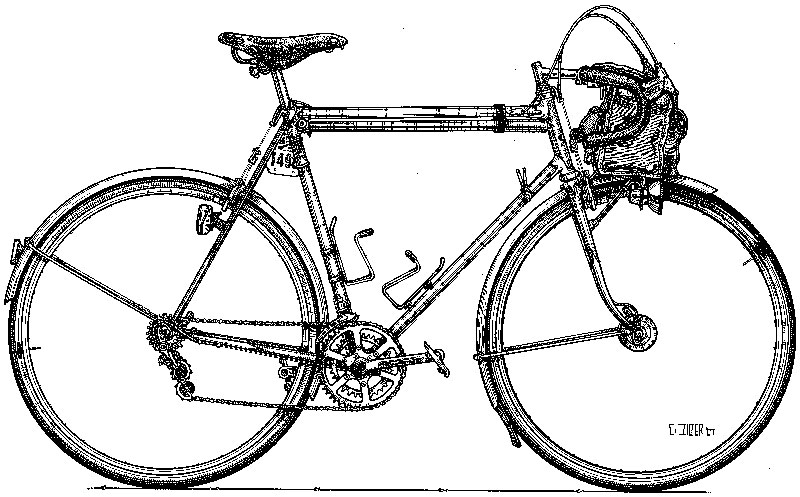Setting Our Own Trends

“You don’t want to give people what they want. Give them something they didn’t know that they wanted.”
Ruth Reichl, former editor of Gourmet.
This quote really resonated with me. When I pick up other cycling magazines, I am often disappointed. They talk about the trends of the moment. Right now I’m pleased that they seem to be wider tires, gravel racing, 650B wheels, and city bikes with porteur racks. I should be happy, and yet there isn’t anything inspirational or new. It’s like reading yesterday’s newspaper…
During a recent solitary ride, I finally realized why this is so. Most magazines live off their advertising revenue. The magazines rely on the bike industry to bring them ideas and content, and so they report on what the industry is pushing at any given time.
As a result, the magazines are unlikely to present new ideas. Why would a bike magazine clamor for a way of riding for which the bikes do not yet exist? Why would they suggest products that their advertisers do not yet sell? Why would they do testing that refutes commonly-held beliefs (and the advertising claims that are based on them)?
Bicycle Quarterly has a different business model from most magazines: We are financed by our readers – by cyclists. This results in a fundamentally different point of view, which has led us to think about what we – the cyclists – need, not what the industry wants to sell.

We are pleased to have been trend-setters in many instances. Looking back over 12 years of publication, here are some things we suggested long before they became commonplace:
- Compact double cranks: In our very first issue, we rode an Alex Singer with 46-32 chainrings. We found this gearing ideal for most riding. At the time, the big makers only offered 53-39 racing cranks or triples.
- Gravel riding: Nine years ago, we wrote about the beauty of riding on gravel roads in the mountains.
- Tire performance: At a time when the industry still was fawning over ceramic bearings, we looked at tires and found that they make the biggest difference in your bike’s performance. Through careful testing, we identified what makes a tire fast.
- Front loads: Our testing showed that front loads are easier to balance and much better when riding out of the saddle – as long as your bike has the appropriate frame geometry.
- Metal fenders: We pointed out that the uninterrupted interior and better coverage of a longer front fender kept you drier. We also weighed aluminum fenders and found that they were lighter than plastic ones.
It has been nice to see these trends adopted by the industry and – finally – by the magazines. But it’s also sad to see that many great things still don’t get exposure in mainstream magazines:

Fully integrated performance bikes: We are starting to see a few city bikes that come with racks, fenders and lights, but if you like spirited riding, you are still told to buy a racing bike that is not much fun in the rain or at night. Bicycle Quarterly has featured and tested many bikes that combine performance with the utility of fenders, lights and a bag. What we want is the Porsche 911 of bicycles – a great performance machine that can be used every day, even when you are running errands.

Truly wide high-performance tires: I am encouraged when I read about “wider tires” being “hot.” Then I realize that the magazines are talking about 25 mm tires. Why not ask for bikes with 38 mm tires and the performance of a racing bike?

Well-designed lights: Most current lights use simple beam patterns that would be illegal in cars. Not only do they blind oncoming traffic, but they also put too much light in the near field and not enough into the middle distance. This makes riding at night tiring and difficult. Better optics put a well-distributed beam of light on the road, and only on the road. These lights are available, but you wouldn’t know it from reading the big bike magazines.
These are just a few examples of products that the industry doesn’t push and that the magazines don’t ask for. These products tend to be hard to make or expensive, so the bike industry isn’t too keen to offer them.
At Bicycle Quarterly, we are proud to write from the perspective of riders. Our concern never has been “What does the industry want?” but “What do we need to take our cycling to the next level?”
As a result, we have nudged and pushed the industry toward better, more versatile bikes that are also more fun to ride. And when some of these trends finally make it into the mainstream, we are happy to have contributed to making cycling more fun for more people.
Click here for more information about Bicycle Quarterly.


